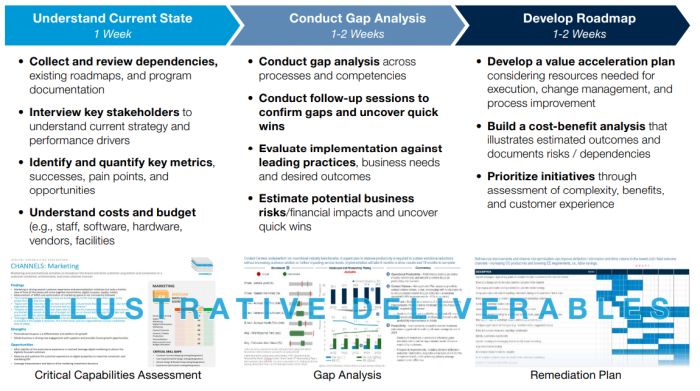- within Insolvency/Bankruptcy/Re-Structuring, Criminal Law, Litigation and Mediation & Arbitration topic(s)
When You're Using a CRM System and Failing To See the Return on Investment
Even after a successful first and second phase of a CRM implementation, organizations question the value delivered relative to the costs of licenses and support. This scrutiny typically intensifies if the earlier phases of the project did not adequately address critical factors such as change management, leadership support and the establishment of clear success metrics. In the absence of these elements, numerous challenges can emerge that hinder the effective adoption and utilization of the CRM system after go-live.
The-benefits of a CRM system can be delayed in the absence of leadership support, change management, and benchmarks to gauge progress. There are major opportunities to rally.
Alvarez & Marsal (A&M) often gets called into client environments as part of a broader cost takeout or value realization effort and is asked to look at the CRM platform as a potential well of unlocked value or sunk costs with minimal return. Based on our experience, the most significant opportunities to create value include the following:
1. Assess Stalled Implementation
A stalled CRM implementation often occurs when projects don't progress beyond the initial stages, leaving subsequent stages of implementation incomplete or entirely overlooked. This stagnation can stem from various factors, such as inadequate planning, resistance to change within the organization, or a lack of clear objectives and benchmarks to measure progress. To tackle this issue, it's crucial to identify the root causes of the stall through a detailed review of project timelines, stakeholder engagement and resource allocation.
Reassessing the original goals of the CRM to ensure they align with current business needs is vital for regaining stakeholder support. Developing a clear, actionable plan with defined milestones and revised timelines can help restart and advance the implementation. The plan should also include mechanisms for increased training and support to enhance user adoption.
Maintaining flexibility in the restart strategy is essential to adapt to new challenges and prevent further delays. By addressing these key areas, organizations can transform a stalled CRM project into a successful initiative that boosts efficiency and drives business growth.
2. License Usage Evaluation
A prevalent issue among organizations with active CRM systems is the inefficient utilization of licenses. It is not uncommon for companies to find themselves paying for licenses that are either entirely unused — with no employees assigned to them — or underutilized, evidenced by less-than-daily login/usage per user. This raises a critical question: How are my people using the application, and can I eliminate or repurpose licenses to enhance system utilization? Proactively managing license allocation can lead to substantial cost savings and greater system efficiency. An in-depth analysis of user engagement and login metrics can help identify whether certain licenses should be reassigned or if lesser-used features of the CRM can be eliminated altogether.
Inefficient utilization of licenses is a common issue. License usage and underutilization of modules deserve separate assessments to maximize the CRM investment.
Another dimension of license usage that often goes overlooked is the underutilization of licensed modules. Many organizations complete the first phase of their CRM implementation and continue paying for additional features and functions that they do not activate or fully integrate. This practice not only leads to wasted financial resources but also misses out on potential enhancements in operational effectiveness that these features could offer. The evaluation should extend to paid but unimplemented services such as data cloud capabilities. It is crucial to assess whether these services could be activated to align with current business needs or should be discontinued to avoid unnecessary expenses.
Given the complexity and the impact of these issues, it might be beneficial to treat license usage and module implementation as distinct sections within a broader CRM optimization strategy. This approach allows for a focused analysis on each area, ensuring that no aspect of the CRM investment is left unchecked. By taking a more granular look at how licenses and features are used, companies can significantly increase the ROI of their CRM systems, thereby transforming these platforms from cost centers into key enablers of business success.
3. Gap Analysis on Metrics
A critical area where many CRM implementations falter is in fully leveraging the platform to monitor and manage key operations in sales, marketing and support. Often, organizations continue to rely on spreadsheets and other ad hoc tools, even when their CRM systems like Salesforce or Dynamics are equipped to provide powerful, integrated metrics. This reliance on familiar, nonintegrated tools can lead to a significant underutilization of the CRM system.
The gap analysis on metrics should focus on identifying these discrepancies — where and why teams resist using the CRM to its full analytical capability. This analysis should investigate whether the metrics provided by the CRM are being ignored in favor of old habits or alternative systems, which often result in fragmented and inefficient operations. By pinpointing these gaps, organizations can develop targeted strategies to encourage the adoption of CRM-generated metrics, ensuring that the full capabilities of the platform are being used to streamline operations and enhance decision-making processes. This transition not only maximizes the investment in the CRM system but also improves operational coherence and effectiveness across the organization.
4. Incorporation of CRM Best Practices
The effectiveness of CRM systems is not just about what they can measure but also how they're used to enhance operational efficiency through the adoption of best practices. Leading CRM platforms offer features like skill-based routing for support tickets and automated lead assignments, which streamline processes and ensure that tasks are handled by the most appropriate personnel. Additionally, the latest advancements in AI, such as tools for proposal creation or product suggestions, empower sales representatives to optimize their time and significantly boost productivity.
It is crucial for organizations to regularly review the capabilities of their CRM systems to ensure that they are utilizing these best practices to their fullest potential. Ongoing evaluation not only helps in leveraging current technologies but also in making a compelling case for the continued use and expansion of CRM systems within the company. By staying updated with and implementing best practices, organizations can significantly enhance their operational efficiency and strengthen their overall CRM strategy.
5. Opportunities To Scale Through Automation
CRM systems are increasingly integrating advanced features such as intelligent automation and process orchestration, enabling companies to enhance efficiency with fewer resources across various departments, including customer support, sales and back-office administration. Innovations like Salesforce's Einstein, Microsoft's Copilot, and PowerAutomate are at the forefront of these developments, although many CRM platforms already possess significant automation capabilities that can facilitate scaling operations.
Investing time annually to explore these automation features is crucial. Consistent review ensures that businesses are not only keeping pace with technological advancements but are also effectively integrating these tools into their CRM systems. By doing so, organizations can maximize their CRM investment, reduce labor costs and improve operational efficiencies, allowing them to do more with less and scale effectively as they grow.
How Can A&M Help Put Your CRM Program Back on a Path to Success and Accelerate the Value?
Alvarez & Marsal (A&M) has been helping companies realize value in every way for over 40 years. Whether it is preserving value in a company being restructured in bankruptcy, uncovering value in a portfolio company of one of our private equity clients, or working with corporate clients to drive and accelerate value through reduced costs or enhanced revenue, A&M focuses on value to be realized and how to best accomplish that in the shortest amount of time.
Our CRM Value Acceleration Program is aimed at companies that are either in the middle of a CRM implementation that is not achieving the implementation goals set out for the program, or ones that have a CRM tool in place but are not achieving the results that were expected when the system was launched. We have a proven approach that is tailored to each client's situation. It is designed to rapidly diagnose the causes preventing value from being realized and provide a blueprint on how to realign results with expectations as quickly and effectively as possible.
A&M's CRM Value Acceleration Program looks for common symptoms that lead to a loss of value, ranging from the implementation, rollout or the steady state operations of a CRM initiative.
Value Acceleration Assessment
CRM programs that are live or in the midst of subsequent phases are a good candidate for our CRM Value Acceleration approach. In a compressed timeline of a few weeks, we look at all aspects of the CRM usage, from licenses and modules to metrics and processes, that are being enabled by CRM to find the highest and best pools of value we can help a client unlock. We also evaluate the structure and execution of the teams implementing and supporting the CRM program.
We don't just diagnose and identify gaps, we put together pragmatic recommendations and a priority-driven roadmap for remediation of the program that includes immediate, mid-term and long-term actions that should be taken, along with resource requirements to execute the roadmap.
CRM EVALUATION APPROACH
A&M leverages a comprehensive framework to guide the assessment across critical areas and helps uncover key risks, issues and focus areas. The rigor of the framework produces data-driven and actionable remediation plans to drive improvement.

A&M's Unique Value Proposition
A&M's unwavering business value focus, combined with our objective point of view, deep industry skills, sense of urgency, and experience in tailoring our approach to handle a wide variety of complex challenges, make us the right firm to help solve your specific CRM challenge. Partnering with you and the best technical and product specialists from Salesforce, Microsoft and others, A&M will provide an expert, tailored solution to your unique challenge, ensuring that whatever challenge you face receives appropriate and expert attention.
Originally Published 8 October 2024
The content of this article is intended to provide a general guide to the subject matter. Specialist advice should be sought about your specific circumstances.




